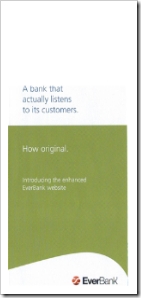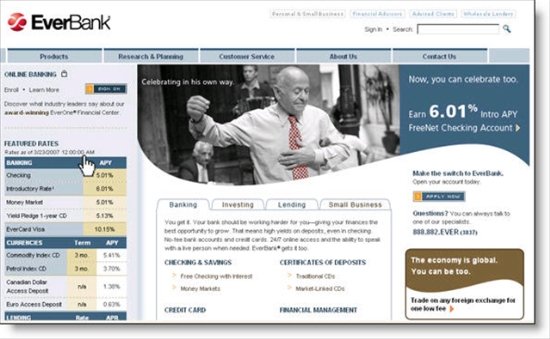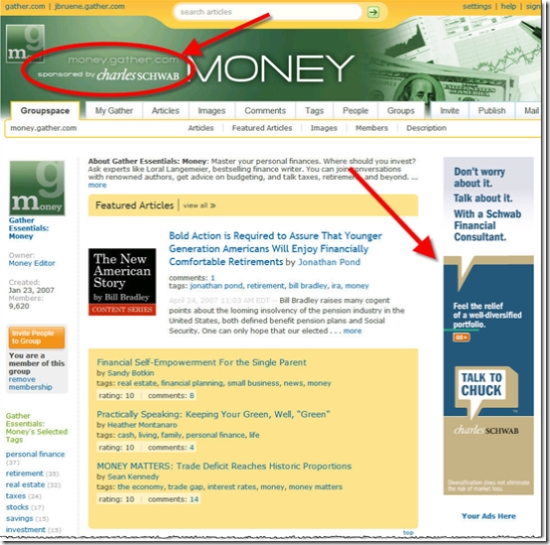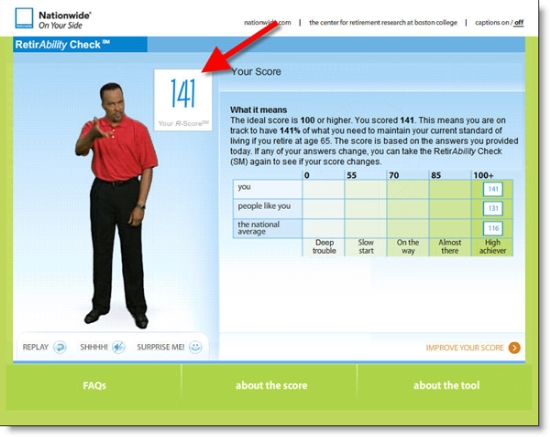 Everbank customers received snail mail today (see inset) announcing a newly designed website and multi-factor login procedure that debuts May 20. The company also changed its corporate "look," adopting a sage green and slate blue that looks modern, but more serious than the lime-green and orange Web 2.0 pallet.
Everbank customers received snail mail today (see inset) announcing a newly designed website and multi-factor login procedure that debuts May 20. The company also changed its corporate "look," adopting a sage green and slate blue that looks modern, but more serious than the lime-green and orange Web 2.0 pallet.
While we'll miss the old look, which featured our Online Banking Report Best of the Web logo in two places (see screenshot below), it was time to move forward. The old look not only was a bit dated, but also too cluttered.
The new design can be previewed now via a well-done, though slightly too long, video at <everbank.com/preview>. The key functional change in the new design is the move from a product-oriented main navigation to a more take-oriented approach. The five main navigation choices in the top bar are:
- Products
- Research & Planning
- Customer Service
- About Us
- Contact Us
Secondary navigation is provided by tabs in the middle of the page.
From a marketing perspective, the homepage now features a single product in a highly visible spot. The upper graphic stands out well with the sweeping lower border (reminiscent of the famous Nike swoosh), while the three lower "banner ads" have been eliminated. The overall effect is a much more focused homepage which should drive more applicants to the core offer, which in the preview is the bank's 6.01% FreeNet checking
A few other details Everbank cleaned up with the new design:
- Single sign-on button instead of choice of four
- Site-search box, instead of a link to the search function
- Exposure to more rates across more products
- Site map added in to link at bottom of page (not shown below)
One thing that surprised me about the new design was the removal of the toll-free telephone number which is prominently displayed in two spots on the about-to-be-replaced homepage (in the top-right corner and in a bold red font, about halfway down the right side). Perhaps, the bank is attempting to "right-channel" more visitors into the online application. It will be interesting to see if the bank brings the number back after a few months with the new design.
Grade: Overall, it looks like it will be an A or A-, but I will hold off final judgement until it goes live and can be fully evaluated. Maybe it's just me, but I still like the page they used six years ago (see last screenshot). It was short-lived, so it must not have driven enough sales, but it sure was a refreshing look compared to the typical bank website, especially six years ago. For more info, see our Online Banking Report on homepage design here and previous coverage of the topic here.
New Everbank homepage design
Previous design
Everbank circa 2001 (April)
Snail mail brochure (inside)


























